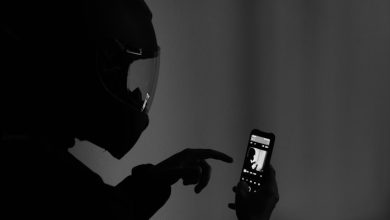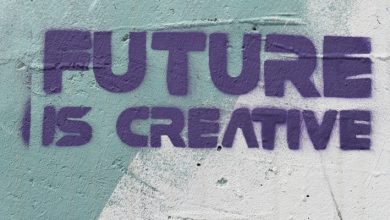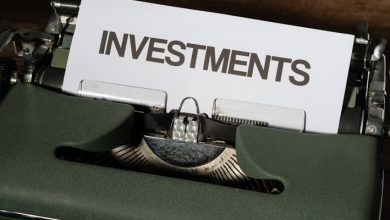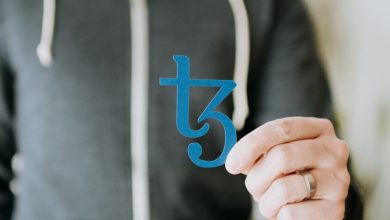AI and NFTs: The Intersection of Technology and Creativity

- Exploring the impact of AI on the NFT market
- How artificial intelligence is revolutionizing the creation of NFTs
- The synergy between AI algorithms and digital art in the NFT space
- Unlocking new possibilities for artists through AI-powered NFTs
- Challenges and opportunities at the intersection of AI and NFTs
- The role of creativity in shaping the future of AI-driven NFTs
Exploring the impact of AI on the NFT market
Artificial Intelligence (AI) is revolutionizing the Non-Fungible Token (NFT) market in various ways. One of the key impacts of AI on the NFT market is its ability to enhance the authenticity and provenance of digital assets. AI algorithms can analyze the metadata of NFTs to verify their origin and ownership, providing a sense of security and trust to buyers and sellers.
Moreover, AI-powered tools can help artists and creators in generating and curating NFTs more efficiently. These tools can assist in the creation of unique and high-quality digital assets, thereby increasing the overall value of NFTs in the market. By leveraging AI, artists can explore new creative possibilities and reach a wider audience with their work.
Additionally, AI plays a crucial role in the pricing and valuation of NFTs. AI algorithms can analyze market trends, historical data, and other relevant factors to determine the fair market value of NFTs. This helps in establishing a transparent and efficient pricing mechanism in the NFT market, benefiting both buyers and sellers.
How artificial intelligence is revolutionizing the creation of NFTs
Artificial intelligence (AI) is playing a significant role in revolutionizing the creation of non-fungible tokens (NFTs). NFTs have gained immense popularity in recent years, allowing creators to tokenize their digital artworks, music, videos, and other forms of content on blockchain platforms. AI technologies are now being leveraged to streamline and enhance the process of generating these unique digital assets.
One way in which AI is transforming the creation of NFTs is through the use of generative adversarial networks (GANs). GANs are a type of machine learning model that consists of two neural networks – a generator and a discriminator. The generator creates new content, such as images or music, while the discriminator evaluates the content to determine its authenticity. This technology enables artists to automatically generate a wide variety of unique and original pieces that can be tokenized as NFTs.
Additionally, AI-powered tools are being used to assist creators in the design and curation of NFTs. These tools can analyze data on market trends, user preferences, and other relevant factors to help artists optimize their creations for maximum impact and value. By harnessing the power of AI, creators can better understand the needs and desires of their audience, leading to more successful NFT launches and sales.
The synergy between AI algorithms and digital art in the NFT space
Artificial Intelligence (AI) algorithms have revolutionized the way digital art is created and consumed in the Non-Fungible Token (NFT) space. The synergy between AI and digital art has opened up new possibilities for artists to express their creativity and for collectors to acquire unique and valuable pieces.
AI algorithms can generate original artworks based on data inputs provided by the artist. These algorithms can analyze patterns, styles, and trends in existing art pieces to create new and innovative designs. This process not only speeds up the creation of art but also introduces an element of unpredictability and surprise, making each piece truly one-of-a-kind.
Moreover, the use of AI in digital art has democratized the creative process, allowing artists of all skill levels to experiment and push boundaries. This has led to a diverse range of art styles and themes in the NFT space, appealing to a broader audience and driving innovation in the art world.
Unlocking new possibilities for artists through AI-powered NFTs
Artists are now able to explore new horizons and expand their creative potential thanks to the integration of artificial intelligence with non-fungible tokens (NFTs). This innovative combination is revolutionizing the art world by offering artists a platform to showcase their work in a unique and secure way.
Through AI-powered NFTs, artists can now reach a global audience without the need for traditional galleries or intermediaries. This direct connection between creators and collectors allows for greater autonomy and control over the distribution and monetization of their art.
By leveraging AI technology, artists can also experiment with new forms of expression and push the boundaries of traditional art forms. Machine learning algorithms can analyze trends and user preferences to help artists tailor their work to resonate with a wider audience.
Furthermore, AI-powered NFTs enable artists to create dynamic and interactive pieces that evolve over time, adding a new layer of engagement for collectors. This fusion of technology and creativity opens up a world of possibilities for artists to explore and innovate in ways never before imagined.
Challenges and opportunities at the intersection of AI and NFTs
As AI and NFTs continue to evolve, they present a unique set of challenges and opportunities at their intersection. One of the key challenges is ensuring the authenticity and uniqueness of NFTs created using AI-generated content. This raises questions about copyright, ownership, and intellectual property rights. While AI can help in generating unique and creative NFTs, it also brings up concerns about originality and plagiarism.
On the other hand, the combination of AI and NFTs opens up new opportunities for artists and creators. AI can be used to enhance the creative process, enabling artists to explore new techniques and styles. It can also help in automating certain aspects of the creation process, making it more efficient and cost-effective. Additionally, AI can analyze market trends and consumer preferences to help artists create NFTs that are more likely to be successful.
Another challenge at the intersection of AI and NFTs is the environmental impact of both technologies. The energy consumption required for AI training and NFT transactions has raised concerns about sustainability and carbon footprints. Finding ways to make these processes more energy-efficient and environmentally friendly is crucial for the long-term viability of AI and NFTs.
The role of creativity in shaping the future of AI-driven NFTs
Creativity plays a crucial role in shaping the future of AI-driven NFTs. As artificial intelligence continues to advance, it opens up new possibilities for creating unique and innovative non-fungible tokens. By leveraging AI technology, artists and creators can explore new ways to express themselves and push the boundaries of what is possible in the digital art world.
One of the key benefits of using AI in NFT creation is the ability to generate endless variations and iterations of an artwork. This allows artists to experiment and explore different styles and techniques, leading to the creation of truly one-of-a-kind pieces. Additionally, AI can help artists streamline their creative process, saving time and allowing them to focus on the conceptualization and ideation of their work.
Furthermore, AI-driven NFTs have the potential to democratize the art world by providing a platform for emerging artists to showcase their talent and reach a global audience. This can help break down traditional barriers to entry and create new opportunities for underrepresented artists to gain recognition and exposure in the art market.
Overall, the intersection of AI and NFTs presents an exciting opportunity for creativity to flourish in the digital realm. By embracing AI technology, artists can unlock new possibilities and redefine the future of art in the age of blockchain and digital ownership. The collaboration between human creativity and artificial intelligence promises to shape a new era of innovation and expression in the world of NFTs.



